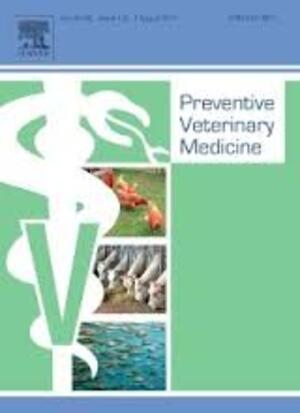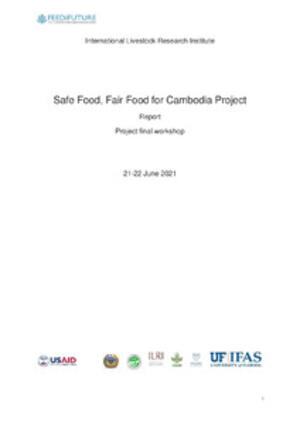
Factors associated with vesicular stomatitis in animals in the western United States
Abstract
Objective—To identify factors associated with development of vesicular stomatitis (VS). Design—Case-control study. Sample Population—138 livestock premises and 118 horses suspected of having VS in Texas, New Mexico, and Colorado. Procedures—Premises with ≥ 1 animal with clinical signs and laboratory confirmation of infection were classified as case premises. Premises where laboratory confirmation results were negative were control premises. Among equine premises, case and control horses were selected on the basis of premises status. A survey was conducted to identify factors associated with VS for premises and specific horses. Results—Control of insect populations in the 2 weeks before the VS investigation decreased the odds of disease for premises where vegetation coverage was grassland or pasture (odds ratio [OR], 0.08; 95% confidence interval [CI], 0.01 to 0.7). Odds of VS for premises covered with grassland or pasture increased when measures to control insect populations were not used (OR, 11; 95% CI, 0.8 to 156.3) and for premises that had a body of water (OR, 2.3; 95% CI, 1.0 to 5.6). Use of measures to prevent insect bites or harassment by insects (OR, 0.2; 95% CI, 0.1 to 0.8) and spending time in shelters (OR, 0.4; 95% CI, 0.2 to 1.1) in the 2 weeks prior to investigation decreased the odds of being a case horse. Conclusions and Clinical Relevance—Insect control and spending time in shelters decreased the odds for infection with VS. Premises covered with grassland or pasture or that had a body of water were at a higher risk.
Citation
Duarte, P.C., Morley, P.S., Traub-Dargatz, J.L. and Creekmore, L.H. 2008. Factors associated with vesicular stomatitis in animals in the western United States. Journal of the American Veterinary Medical Association 232(2): 249-256.










